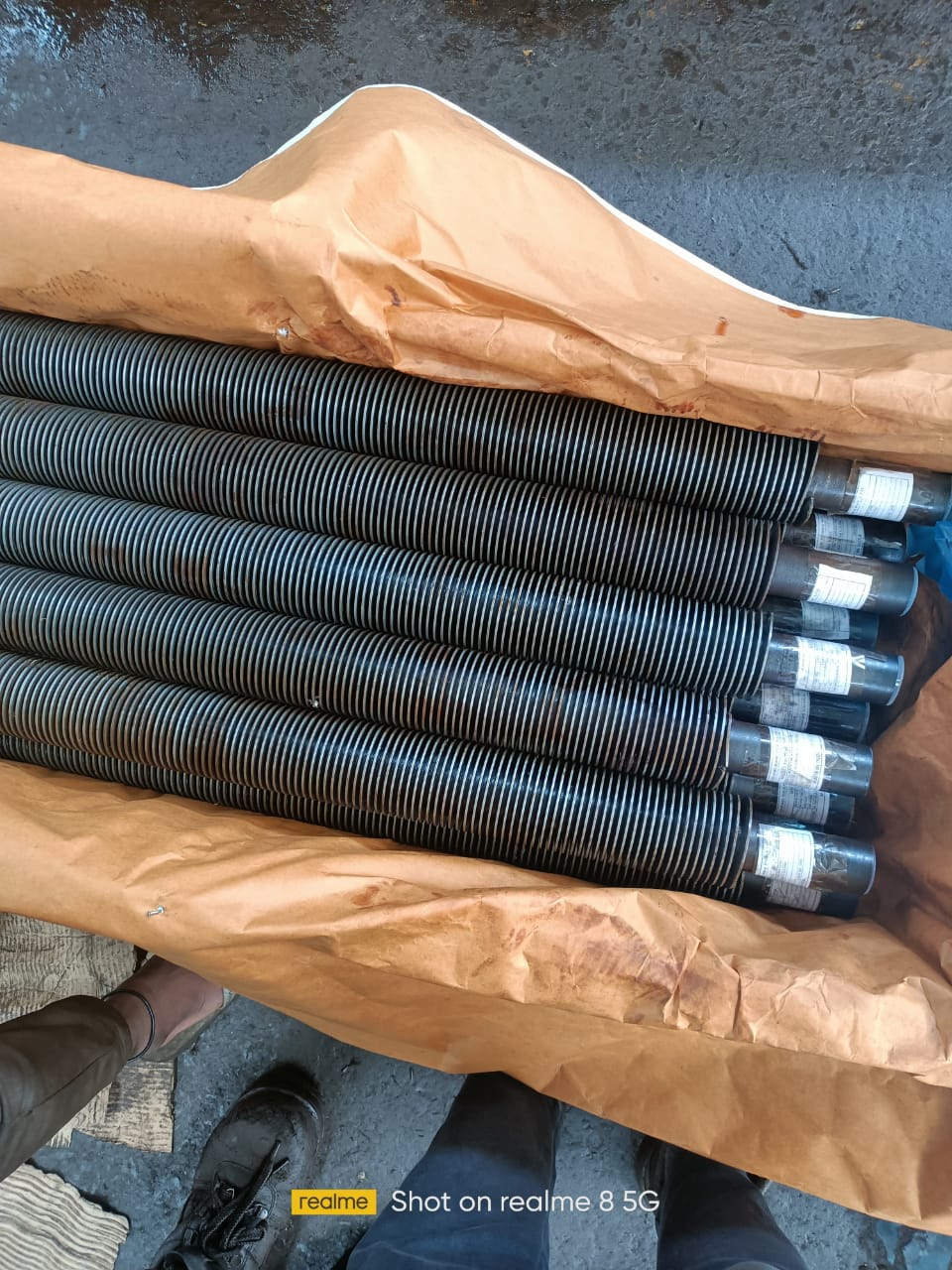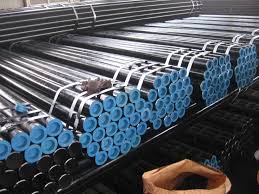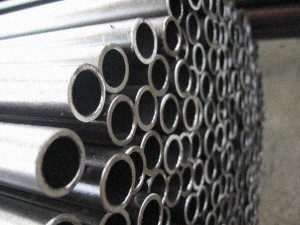Quick Inquiry
In the world of industrial processes, efficiency and performance are paramount. Businesses operating in diverse sectors such as power generation, petrochemicals, and HVAC (Heating, Ventilation, and Air Conditioning) often rely on heat exchangers to optimise their operations. One type of heat exchanger that plays a crucial role in these applications is the solid finned tube heat exchanger.
In this comprehensive guide, we delve into the intricacies of solid finned tubes, explaining what they are, why the surface area is a critical factor, and how to maximise their heat transfer performance. For businesses, understanding these fundamentals can lead to improved efficiency and cost-effectiveness.

What is a Solid Finned Tube Heat Exchanger?
Solid-finned tube heat exchangers, often referred to simply as solid finned tubes, are a vital component in many industrial processes. They are designed to transfer heat from one fluid to another while ensuring minimal heat loss. The ‘solid finned’ aspect refers to the presence of fins that extend from the outer surface of the tube. These fins significantly increase the surface area available for heat transfer, which is crucial for efficient heat exchange.
In this type of heat exchanger, one fluid (typically a hot fluid) flows through the inside of the tube, while another fluid (usually a cooler fluid) circulates around the outside of the tube. The heat from the inner fluid is transferred to the outer fluid through the solid fins. This process allows for the exchange of thermal energy, making solid-finned tubes indispensable in various industrial applications, including power plants and chemical processing.
Why Surface Area is Important
The efficiency of a solid finned tube heat exchanger is directly linked to the amount of surface area available for heat transfer. A larger surface area facilitates more efficient heat exchange, resulting in better performance. The solid fins on the exterior of the tube serve to increase this surface area significantly, making them an essential component of the heat exchanger.
The greater the surface area of the tubes, the more heat can be transferred between the fluids. This is especially crucial in situations where heat needs to be efficiently removed or added to a process, as the effectiveness of the heat exchanger directly impacts the overall efficiency of the system. In addition to increasing efficiency, a larger surface area can lead to energy savings and reduced operating costs.
Finding the Right Amount of Solid-Finned Tubing
Selecting the appropriate amount of solid finned tubing for a heat exchanger is a key decision. The right amount will ensure that your heat exchanger operates efficiently, whereas too much or too little tubing can lead to suboptimal performance. To determine the ideal quantity of solid-finned tubes, several factors need to be considered, including the heat transfer requirements, the type of fluids involved, and the design constraints.
Factors to consider when determining the quantity of finned tubing include:
1. Heat Transfer Rate
The first step is to calculate the required heat transfer rate for your specific application. This depends on the temperature difference between the hot and cold fluids, the flow rates, and the desired efficiency of the heat exchanger.
2. Thermal Properties of Materials
Understanding the thermal properties of the materials used in the heat exchanger is essential. Different materials conduct heat at varying rates, so the selection of materials will impact the overall heat transfer efficiency.
3. Fluid Flow Rates
The flow rates of both the hot and cold fluids have a direct impact on the amount of solid-finned tubing required. Higher flow rates may necessitate more tubing to achieve the desired heat transfer.
4. Temperature Range
The temperature range over which the heat exchanger operates is a critical factor. Extreme temperatures may require thicker and more robust solid fins.
5. Space and Design Constraints
Practical considerations like available space and design constraints can also influence the quantity of solid-finned tubing that can be accommodated.
By carefully evaluating these factors, businesses can determine the optimum quantity of solid finned tubing to achieve the desired heat transfer performance without overloading the heat exchanger or compromising efficiency.
How to Find the Surface Area of a Solid-Finned Tube
Calculating the surface area of a solid-finned tube is essential to ensure that it meets the specific heat transfer requirements of an application. The surface area consists of the surface area of the tube itself and the surface area of the fins.
Here’s how you can calculate it:
1. Surface Area of the Tube
The surface area of the tube can be calculated using the formula for the lateral surface area of a cylinder:
Lateral Surface Area of Tube = 2 * π * r * L
Where:
- π is the mathematical constant (approximately 3.14159).
- r is the radius of the tube.
- L is the length of the tube.
2. Surface Area of the Fins
The surface area of the fins is a bit more complex to calculate as it depends on the geometry of the fins. The specific shape and dimensions of the fins will determine the surface area.
For commonly used rectangular fins, you can calculate the surface area using the following formula:
Surface Area of Rectangular Fins = 2 * (n * L * h + n * w * t)
Where:
- n is the number of fins per unit length.
- L is the length of the tube.
- h is the height of the fins.
- w is the width of the fins.
- t is the thickness of the fins.
3. Total Surface Area
To find the total surface area of a solid-finned tube, simply add the surface area of the tube to the surface area of the fins:
Understanding the total surface area of the solid-finned tubes in your heat exchanger is crucial for assessing their heat transfer capabilities and ensuring they meet the heat transfer requirements of your application.
Determining Required Heat Transfer for Solid-Finned Tubes
To optimise the performance of solid finned tube heat exchangers, it’s essential to determine the required heat transfer rate for your specific application. This rate depends on various factors, including the type of fluids being used, the temperature difference between the hot and cold fluids, and the desired efficiency of the heat exchanger. By calculating the required heat transfer, you can ensure that your heat exchanger is operating at its most efficient capacity.
1. Calculate Heat Transfer Rate (Q)
The heat transfer rate (Q) can be calculated using the formula:
Q = U * A * ΔT
Where:
- U is the overall heat transfer coefficient, which depends on the materials and design of the heat exchanger.
- A is the total surface area available for heat transfer, as discussed earlier.
- ΔT is the temperature difference between the hot and cold fluids.
2. Determine the Required Heat Transfer
The required heat transfer for your application depends on your specific needs. It might be the heat needed to maintain a certain temperature or to cool down a process. Once you have calculated the heat transfer rate (Q), you can compare it to the required heat transfer to ensure it meets your application’s demands.
By accurately determining the required heat transfer and assessing the performance of your solid finned tube heat exchanger, you can make informed decisions about whether the existing equipment is adequate or if modifications are necessary to meet your desired heat transfer requirements.
How to Optimize Heat Transfer Performance
Optimising the heat transfer performance of solid finned tube heat exchangers is crucial for enhancing efficiency and reducing operating costs. There are several strategies that businesses can implement to achieve optimal heat transfer performance:
1. Enhance Surface Area
Increasing the surface area of the solid fins can significantly improve heat transfer. This can be achieved by adding more fins or using fins with larger dimensions. However, it’s essential to strike a balance between surface area and pressure drop, as excessive surface area may result in a higher pressure drop, affecting fluid flow.
2. Improve Fluid Flow
Efficient fluid flow is essential for optimal heat transfer. Ensuring a uniform and controlled flow of hot and cold fluids helps maximise heat exchange. Proper design and maintenance of the heat exchanger can help achieve this.
3. Use High-Conductivity Materials
The choice of materials for the solid fins and tubes plays a critical role in heat transfer efficiency. Using materials with high thermal conductivity, such as copper, aluminium, or carbon steel, can enhance heat transfer rates.
4. Cleanliness and Maintenance
Regular maintenance and cleaning of the heat exchanger are essential to prevent fouling and scaling on the heat transfer surfaces. The buildup of deposits on the fins can significantly reduce heat transfer efficiency.
5. Control Temperature Differences
Minimising the temperature differences between the hot and cold fluids can improve efficiency. This can be achieved by adjusting flow rates, fluid properties, and operating conditions.
6. Monitor and Adjust
Regular monitoring of the heat exchanger’s performance is vital. By analysing temperature profiles and pressure drops, you can identify areas for improvement and make adjustments accordingly.
Choosing the Right Material
The choice of materials for solid finned tubes is a critical decision, as it can significantly impact the heat transfer performance and durability of the heat exchanger. When selecting materials, several factors should be considered:
1. Thermal Conductivity
Materials with high thermal conductivity, such as copper, aluminium, or carbon steel are preferred for solid-finned tubes. These materials allow for efficient heat transfer between the fluids.
2. Corrosion Resistance
Depending on the nature of the fluids being handled, it’s essential to select materials resistant to corrosion. Corrosion can reduce the efficiency of the heat exchanger and lead to costly maintenance and replacements.
3. Mechanical Strength
The materials used should have adequate mechanical strength to withstand the operating conditions and pressure differentials within the heat exchanger.
4. Cost Considerations
Cost is always a factor to consider. While high-conductivity materials are ideal for heat transfer, they can be more expensive. A balance between performance and cost-effectiveness is necessary.
5. Compatibility
Ensure that the materials used are compatible with the fluids being processed. Incompatibility can lead to material degradation and affect heat exchanger performance.
Tips for Proactive Material Procurement
Proactive material procurement is essential for businesses operating solid finned tube heat exchangers. Here are some tips to make informed decisions when procuring materials for your heat exchanger:
1. Supplier Assessment
Carefully evaluate potential suppliers. Look for reputable suppliers with a track record of delivering high-quality materials. Consider factors such as lead times, quality certifications, and customer reviews.
2. Material Testing
Prior to large-scale procurement, conduct material testing to ensure that the selected materials meet the required specifications and performance standards.
3. Quality Standards
Ensure that the materials meet international quality standards. For instance, materials used in heat exchangers should adhere to ASTM (American Society for Testing and Materials) standards for the specific alloy or material type.
4. Long-term Availability
Assess the long-term availability of the selected materials. Ensure that the supplier can consistently provide the materials required for maintenance and potential expansion.
5. Cost Analysis
While quality is paramount, conduct a cost analysis to find a balance between performance and affordability. Consider the total cost of ownership over the lifespan of the heat exchanger.
We Manufacture Solid Finned Tubes of International Standards
Elevate your industrial processes with the finest in heat exchange technology. At Anand Seamless Ltd, we take immense pride in our commitment to manufacturing a wide range of seamless tubes and pipes that meet and exceed international standards. Our dedication to quality, efficiency, and reliability sets us apart in the industry.
When you choose our solid finned tubes, you are opting for top-tier materials and craftsmanship designed to optimise heat transfer and enhance the performance of your equipment. Whether you’re in power generation, petrochemicals, or HVAC, our products ensure seamless operations.
Experience the difference that international standards bring to your business. Join the countless satisfied clients who have elevated their heat exchanger systems with our exceptional products. Contact us at +91-9099996853 or email us at inquiry@anandseamless.com to explore our range of products and services.
lATEST BLOG |
|
The Rise of Finned Copper Tubes in High-Performance Cooling Systems
In today’s fast-paced world of industrial in |
|
Role of Finned Tubes in Waste Heat Recovery Systems
In today’s industrial world, where energy effici |
|
Why Cold-Drawn Tubes Are Ideal for High-Pressure Applications
In industries where materials are pushed to the ed |
|
Common Seamless Tube Defects and How Manufacturers Prevent Them
Seamless tubes are the backbone of many critical a |
|
10 Questions to Ask Your Seamless Pipe Manufacturer Before Ordering
When sourcing steel seamless pipes, choosing the r |



